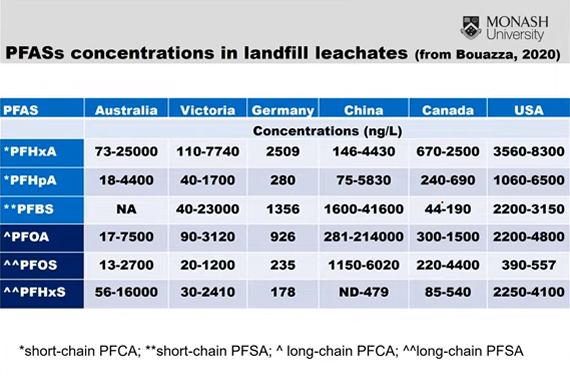The movement for greater open sharing of engineering technical information, particularly in geosynthetics, continues to grow. One of the champions has been the Australasian Chapter of the International Geosynthetics Society (ACIGS). The group’s July 2020 technical lecture on the challenging topics of PFAS stands as a strong example.
The hour-long lecture from Prof. Malek Bouzza, “PFAS and Geosynthetic Liners: Current Status and the Way Forward,” is one of many resources shared by ACIGS with the international community.
It’s no surprise that ACIGS was recently recognized as one of the five most-active IGS chapters in the world.
RELATED: Siamak’s Geosynthetics Podcast Checks In with Boyd Ramsey on PFAS
PFAS & GEOSYNTHETICS
The man-made chemicals that comprise per- and polyfluoroalkyl substances (PFAS) have been used in manufacturing for roughly 80 years. These chemicals have been found in food packaging, cleaning products, electronics, paints, and much more. Unfortunately, PFAS do not break down, meaning they build up in the environment and living organisms, including the human body. Various negative impacts on human health have been associated with PFAS.
Safely disposing of them—essentially, containing them—is now part of a major international push. This engineering work involves geosynthetics for their impermeable containment performance.

So how do these substances interact with polymeric materials like geosynthetics? As Bouazza’s lecture shows, a working knowledge of PFAS chemistry is important. This is essential for proper geosynthetic material selection for on-site repositories and landfill applications. The liners on these sites will be subjected to hugely different concentration loadings and different expressions of the dominating PFAS. Consequently, the selection of geosynthetic liner components must account for these differences and distinguish between the expected exposure conditions.
Bouazza addresses the fate and migration of these chemicals with regards to geomembranes and geosynthetic clay liners (GCLs) in containment barrier systems. His lecture touches on concentrations of chemicals found in landfill leachate and drinking water in various countries, the hydrophilic nature of short- versus long-chain substances, current research, and available guidelines.
Learn more about ACIGS
Learn more about the International Geosynthetics Society











